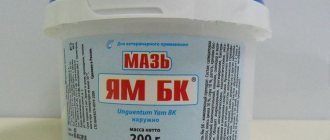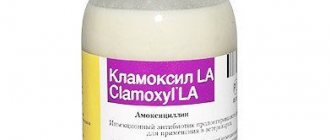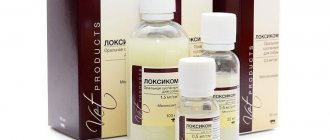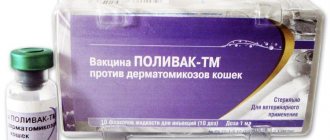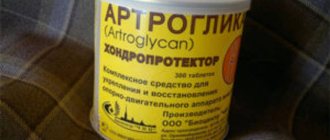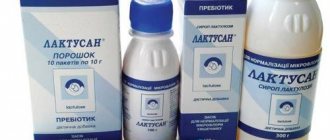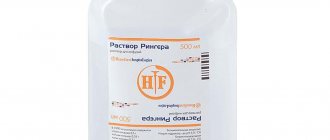Unfortunately, just like people, cats are increasingly showing allergic reactions to a huge list of environmental components.
The selection and use of medications that relieve allergy symptoms - antihistamines or other medications for cats - require great attention and mandatory consultation with a veterinarian.
From this article you will learn:
When should you see a doctor?
If you notice the following symptoms in your animal, then this is a reason to think:
- Itchy skin and constant scratching of the fur.
- Hair loss in tufts.
- Nervous "twitching" of the skin.
- The appearance of ulcers, plaques, weeping spots, non-healing wounds, blisters, etc. on the skin and mucous membranes.
- Miliary dermatitis is a rash in the form of numerous small bright red sores that the cat constantly scratches.
- Frequent, prolonged nervous licking, the cat is not satisfied with the result of the process and begins to lick itself again and again, something constantly bothers it in the fur or on the skin.
- Dryness and flaking of paw pads.
- Sneezing, coughing, shortness of breath.
- Redness and watery eyes.
For any manifestations of allergies, it is better to consult a veterinarian as soon as possible, because the longer the cat scratches itself, the greater the likelihood of secondary infections , which will greatly complicate treatment.
A cat especially needs help when it has difficulty breathing, shortness of breath, swelling of the larynx - in this case, the cat may suffocate!
After an insect bite or the administration of any drug or vaccination, a cat may develop anaphylactic shock - a severe, rapid allergic reaction that is life-threatening.
Main signs: shortness of breath, swelling of the mucous membranes, a sharp decrease in body temperature, wheezing, convulsions, etc. It is necessary to call a veterinarian as soon as possible or take the animal to the clinic (during transportation the animal lies on its side, wrapped in a blanket, with its hind legs slightly raised).
Causes of allergies in cats
The causes of allergies in cats, as in other animals, are a hypertrophied reaction of the immune system to foreign substances, which are not dangerous in themselves.
That is, these are not bacteria, viruses or toxins, but substances and objects that surround us in everyday life: dust, wool, pollen, food.
Normally, the cells of the immune system do not react to them, but in case of allergies, they perceive them as pathogenic agents and react accordingly: the body tries with all its might to remove the allergen.
The most susceptible to allergies in cats are the skin and mucous membranes. If in humans allergies are primarily associated with sneezing, nasal congestion, and red eyes, then in cats the main sign of allergies of any etiology is itching and scratching of the skin .
Depending on the type of allergen and the way it enters the body, allergies are distinguished:
- Food - for certain types of meat, fish, components of prepared feed.
- Respiratory - for inhalation of dust, pollen, cat litter, etc.
- Parasitic - on the saliva of fleas and other blood-sucking insects.
- Chemical - for shampoos, detergents, etc.
- Contact - local skin reactions at the site of contact with a foreign substance.
How to give Zodak to a cat?
What should you know before using antihistamines? Such drugs block histamine receptors in the body, thereby reducing the release of substances into the blood that are responsible for the development of allergic reactions.
Antihistamines have several generations. First generation drugs act quickly, but do not show their effect for long. In addition, they become quickly addictive, and then the effect of such drugs ends.
They also have particularly pronounced side effects and a hypnotic effect. The list of such drugs is quite large, for example, one of them is Cetirizine. As a rule, medications are prescribed in the form of tablets, but some doctors also prescribe injections. Injections are usually prescribed for severe allergies in an animal.
An anti-allergen product should not be mixed with food when you decide to treat your cat for allergies. The best option is to give the tablets between meals.
The interval between the first and subsequent tablets should be from 8 to 12 hours. The dosage for each cat is determined individually and prescribed by a veterinarian. The duration of treatment for the animal is also determined individually. For example, if your cat suffers from seasonal allergies, then the course can be carried out in advance. In this case, medications should be taken even in the complete absence of signs of the disease.
In order to decide how many drops to give your cat, you need to look at the weight and age of your pet. However, in order not to make a mistake, it is better to consult a veterinarian, since everything is quite individual.
If you give Zodak without consultation, then you should focus on the recommendations for children. As a rule, this is up to 5 drops 1 time per day. However, if you see symptoms of overdose on your pet, reduce the amount of the drug consumed or stop it altogether and consult a doctor.
You should weigh your cat before giving Cetirizine to your cat. The main dosage of the medicine is calculated based on the weight of the pet. It is recommended to give cetirizine to cats at the rate of 1 milligram of the drug per 1 kilogram of weight, but not more than 5 milligrams at a time. The frequency of taking the medication is no more than once a day.
Pay close attention to your pet's general well-being, as Cetirizine has a number of side effects that can negatively affect your pet's health.
However, before use and calculating the dosage, you must consult your veterinarian. Cats, just like people, can negatively tolerate a particular drug. And treating allergies can lead to treating a more unpleasant illness for your pet. Allergies in cats are similar to allergies in humans, so they require careful and responsible treatment. Therefore, you should not self-medicate or expect the disease to go away on its own.
Be sure to consult your doctor about treatment options. And if your animal has a regular predisposition to allergies, then you should definitely carry out preventative treatment. For various manifestations of allergic reactions in furry pets, antihistamines for cats are prescribed. The disease may appear immediately or after some time.
Have various symptoms. The action is based on blocking histamine receptors. Allergies can be seasonal, as well as to food, household chemicals, dust, and vaccinations. Requires urgent treatment. A cat can also suffer from allergies.
The disease manifests itself in the same way as in humans; the source of its excitation is a certain irritant. Veterinarians most often prescribe Zyrtec for cats and kittens. I don’t know about other children, but mine all weighed about 10 kg a year. And at two too. Tell me, please! My children did not have allergies, I have not encountered such medications. It’s also scary to harm the animal! Do not try to pour slop on the pig - after a while you will find that you are covered in slop from head to toe, and the pig also likes it.
You can't donate blood in our city. We need to go to Novosibirsk. Since I was told it was an allergy, I just did what I was told. What if it's hormonal? Can I knit with this redness? It will probably never go away until the hormonal levels stabilize. She will be in heat in just a couple of days. And change is not necessary. Sometimes an allergy begins without connection with anything, except perhaps the period of puberty.
It’s a dubious joy to buy a kitten from such animals and then run with it to veterinarians and treat these tendencies.
Food allergies are the rarest. It is not the manufacturer of the food that is important, but its composition. Read the beginning of the topic. Does your dog suffer from allergies, joint pain, epilepsy, etc. Have you tried many different treatments but can't seem to help your dog? John Symes DVM has been promoting a gluten-free, all-dairy, soy- and corn-free diet for the past 4 years. Elimination of harmful foods from the diet usually causes a decrease and even disappearance of symptoms, sometimes a few days are enough for this.
And in general, there are so few food allergies that it’s worth the bother, and why bother, if to treat food allergies it’s enough to eliminate the product to which the reaction occurs from the dog’s diet? I have a question for you: if we assume a food allergy, then when changing food, how long will it take to remove the allergen from the body, a day - two or more?
I have been suffering from itching and hair loss for 5 years now. After using Dexofort, the condition returned to normal. They haven’t used it for three months now and the itching of the face has started again. Dexafort is a very strong hormone. If one injection lasts for 2-3 months, you can do it once, but using it constantly is very dangerous.
Until the last 2 months, she showed no signs of allergies. We fed him Proplan for a very long time, then switched to Alma-Nature, but since it is quite difficult to get it in our city, we switched back to Proplan.
About a month after that, 2 months ago, I started combing myself. We took him to the veterinarian, she diagnosed an allergy and advised him to treat the scratching with chlorhexidine and switch to Royal Canin hypoallergenic. The scratching continued. They took me to another veterinarian.
The veterinarian took scrapings and found no parasites and also diagnosed an allergy. For 10 days, they wiped the ears, dripped Otribiviotin into the ears, smeared the scratching areas with chlorhexidine and soldered them with Zyrtec drops. The doctor said not to change the food to rule out an allergy to it. After some time, the symptoms recurred, but even after changing the food to purine hypoallergenic, the HA symptoms continued.
What can you do? Should Zyrtec and Otribiviotin be reinstated? Is it possible to give any medications to relieve itching, and which ones? What else can you change, what can you isolate your cat from in order to eliminate allergies? So, can you give your cat Zyrtec? The choice of treatment for a pet is the decision of each owner. At the moment, antihistamines are represented by 3 generations of drugs:
Still, when choosing a drug for your pet, you need to consult a veterinarian. It is a specialist who can provide proper assistance in treating your pet. When an allergen enters a cat’s body, the immune system recognizes it as a foreign and dangerous substance. At the same time, histamine enters the blood.
This substance interacts with cell receptors and causes allergy symptoms. Antihistamines for cats relieve these symptoms. How can you tell if an animal is having a negative reaction to an irritating substance?
This can be determined by the following signs:. Signs of an allergy depend on the type of substance that caused the negative reaction.
For example, with food intolerance, dyspeptic symptoms are more common, and with insect bites, the animal is bothered by itching and manifestations of dermatitis.
What antihistamines can be given to adult cats and kittens?
The main condition for successful treatment and complete elimination of allergies is the removal of the allergen.
It is clear that this is not always possible, but if the exact cause of the allergy is known , it is already possible to act with sufficient effectiveness.
If you are allergic to dust, you need to carry out wet cleaning more often, while placing the cat in another room for a while, wash the cat's bed more often, regularly change the filters of the vacuum cleaner, and, if possible, avoid carpets.
If it turns out that the cause of the allergy is pollen, then you will have to limit the cat’s walks during flowering and wash its fur after walks.
If the cause is mold, you should not let the cat into the basement; you need to get rid of the mold in the rooms, for example, on the ceiling in the bathroom.
If there is a food allergy, you will have to review the cat’s entire nutrition system or switch it to special hypoallergenic food.
If you are allergic to flea and tick bites, it is necessary to remove the parasites as soon as possible.
It is almost impossible to completely protect a cat from an allergen, especially if it is seasonal flowering of plants on the street, so to relieve allergy symptoms you have to resort to the use of medications .
Antihistamines are the most effective and have the least side effects.
Histamine is a biologically active substance (mediator) released by the body in response to the penetration of an allergen.
Antihistamines prevent histamine from binding to receptors and, therefore, it cannot affect the cells and tissues of the body.
There are several types of histamine receptors - H1, H2, H3 and H4. Most antihistamines block H1 receptors. Some - Ranitidine, Famotidine, Cimetidine - block H2 receptors. These medications for cats are ineffective and dangerous.
If the instructions say that the product is an H2 receptor blocker, then it cannot be used .
Among the H1 blockers for cats, the most commonly used are Cetirizine, Hydroxyzine, Chlorpheniramine and some others.
A veterinarian should select an antihistamine and prescribe a dose!
The duration of taking antihistamines is 1-3 weeks . It is advisable to use regardless of the main meal. You can mix the required amount of medicine into the treat or simply dilute it with water.
The weight of a Cetirizine tablet, for example, is 10 mg, an average cat is 5 kg, therefore, you need to take 0.5 tablets (5 mg), grind into powder and dilute in a small amount of food or water.
Zyrtec and Zodak with the same active ingredient (cetirizine) are available in the form of drops and are much more convenient to use: a cat weighing 5 kg can be given 3-4 drops (up to 5) of the medicine once a day. Be sure to dilute it well with water, because the drops have a rather pronounced “medicinal” taste, which the cat may not like.
The most effective drugs
To treat allergies in cats, they use proven remedies, often suitable not only for animals, but also for humans, and therefore are sold in a regular non-veterinary pharmacy. But, before purchasing the drug yourself and giving it to your animal, you need to call the veterinary clinic and ask, for example, whether cats can be given loratadine for allergies or any other drug recommended by the pharmacist (the list of drugs is quite long).
Mexidol injections
Available in two forms - injections and tablets. Injections are the most effective and safe. The drug is prescribed to improve blood circulation, increase the body's endurance (acts as a sedative), and against skin diseases. Injections are used for acute forms of the disease. The estimated dose is 15 mg per 1 kg of weight. Adverse reactions occur only if the animal has an individual intolerance to this antiallergic drug for cats.
For your information! Mexidol should be used with caution if kidney or liver function is impaired.
Omega-3
Omega-3 fatty acids are a supplement that can be beneficial for animals. This is not a medicine, but an additional source of active substances. The drug helps maintain the animal’s coat in proper condition (this is especially true when breeding Scottish cats), prevent the development of dermatitis, and reduce the intensity of aggravated skin diseases.
Important! Give omega-3 regularly, and not just when an allergic reaction occurs.
Cyproheptadine (peritol)
Available in the form of tablets and syrup. The drug is used to prevent allergies or alleviate their symptoms. Peritol relieves itching, acts as an anticholinergic, antiexudative and sedative. The dosage is selected by the doctor. Zyrtec for cats has a similar effect on the body, the dosage of which is also selected solely on the recommendation of a specialist.
Zyrtec
Clemastine (tavegil)
Relieves runny nose and cough. After taking the drug, the animal stops sneezing and tears stop rolling from the eyes. The positive effect lasts for a long time. To achieve it, it is enough to give the cat 0.5 tablets every 12-24 hours. The drug affects the central nervous system, which is why the animal becomes apathetic, refuses to eat, and often goes to the toilet (loose stools).
Zodak and Zodak Express
Zodak is a 2nd generation antihistamine. It is produced in the form of tablets, drops, syrup and solution for injection. The product begins to act after 15 minutes. after introducing it into the cat’s body, it helps with various types of allergies, is effective for 24 hours, and does not contain sugar. Zodak is suitable for cats of all ages; there is a drug for kittens. The dose depends on weight. The drug blocks the release of histamine, and there are practically no side effects after its use.
Suprastin
Suprastin is an antihistamine used to treat allergies in humans and animals. The dose depends on weight, 0.25 tablets are given for every 5 kg of weight (it cannot be exceeded, sharply negative reactions are possible). The course of treatment depends on the doctor’s recommendation, but usually does not exceed three days.
Note! Suprastin can also be purchased in the form of injections.
Suprastin
Hydroxyzine
The antihistamine calms, suppresses vomiting, relieves pain, and helps the pet breathe as it promotes dilation of the bronchial tubes. To treat an adult cat, it is enough to give her up to 15-20 mg of allergy medication for cats per day.
Diphenhydramine
Often used to get rid of allergies resulting from insect bites. After using the drug, the animal becomes lethargic and sleeps a lot (this is normal). The side effects are the same as with regular diphenhydramine. Diphenhydramine should not be given to kittens, pregnant animals, or lactating cats, or together with medications to lower body temperature. To relieve signs of allergy, it is enough to give an adult animal 2-6 mg of the substance once a day.
Chlorpheniramine
Helps with feline dermatitis and urticaria, but long-term use is prohibited (up to three days in a row). The drug is taken when acute signs of the disease appear. It is administered intramuscularly or orally (before or after meals). Dose - 1-2 ml for intramuscular administration and 2-4 ml for oral administration.
Prevention and nutrition
The most effective measures to prevent allergies in cats are quite simple:
- Periodic preventative treatments for fleas and ticks.
- Maintaining cleanliness, wet cleaning of houses, synthetic bedding that does not accumulate dust.
- Selection of suitable, dust-free, hypoallergenic toilet fillers.
- Using hypoallergenic shampoos to wash wool.
- Warn your veterinarian about any allergic manifestations ever noticed in your cat before vaccination. Choose imported vaccines for vaccination that are as free from impurities as possible.
If you have a food allergy, then you must follow a hypoallergenic diet :
- Select hypoallergenic food or, if the cat is on a natural diet, switch it to rabbit, nutria, venison, salmon, mixing the meat component with potatoes or cereals.
- Avoid milk, pork, beef, eggs, chicken, soy, baked goods, and any flavor enhancers.
- Do not mix feed with natural food.
The duration of the diet is 3-4 months . Then one of the prohibited products is reintroduced into the diet and, if the allergic reaction to it does not recur, it is left on the menu. This creates a safe diet.
Video on the topic
Vet advice for food allergies:
Which antihistamines are best for treating infants and older children with allergies - list
The most effective antihistamines for skin allergies for adults and children: list of names
What antihistamines are used for dogs for different types of allergic reactions?
The cheapest new generation antihistamines and their features
List of approved antihistamines during pregnancy
What are the types of antihistamines and what are they in simple terms from the point of view of clinical pharmacology?
Allergies are one of the most common diseases in both people and animals. Despite the fact that the pathological reaction always develops according to the same pattern, it manifests itself differently in all patients. Sometimes allergy symptoms are similar to signs of other diseases, so when they appear, you should not self-medicate, you must immediately show the animal to a veterinarian. How are allergies treated in pets?
What is an allergy: the mechanism of an allergic reaction
Allergy is the body's increased sensitivity to certain substances (allergens). An allergic reaction occurs due to the combination of irritating components with blood mast cells and basophils and the production of inflammatory mediators - histamines. To protect the body from these formations (antigens), the immune system, with the help of B and T lymphocytes, starts the process of producing immunoglobulins (antibodies) and destroying its own cells affected by harmful components.
Allergy symptoms in a cat
The course of an allergic reaction is accompanied by the following symptoms:
- difficulty breathing - due to swelling of the nasopharynx and irritation of the mucous membrane by allergens, the pet often sneezes, he begins to snore, which was not there before;
- tearfulness, clear and purulent discharge from the nasal passages;
- redness and inflammation of the skin;
- itching, most often in the head and neck area, due to which the animal scratches the skin until it bleeds;
- rash in the form of small red dots protruding slightly above the skin;
- hair loss;
- peeling of paw pads and interdigital spaces as a reaction to contact with litter, reagents, etc.;
- vomiting and diarrhea - with food allergies;
- the presence of fleas and traces of their vital activity on the skin and fur - if the allergy is triggered by the activity of parasites.
Allergy symptoms
If we reinterpret the words of the classic about love, it turns out that all ages of cats are susceptible to allergies. Also, allergies do not depend on breed. Much depends on the pet’s living conditions and habits, living conditions and quality of nutrition. Cats and cats that love to walk outside are susceptible to natural allergies. Any grass or pollen can cause the disease.
A cat or cat, as well as a cat child, who is not allowed into the yard, may not tolerate house dust and tobacco smoke. Insect bites can have serious consequences. The cat and cat suffer from pain, and are subsequently haunted by unbearable allergic itching. Zyrtec combats allergy symptoms, which may include:
- red spots on the skin;
- baldness in places;
- peeling of the skin on the pads of the feet;
- wounds on the paws;
- the animal is itchy, it is constantly scratching;
- vomiting, diarrhea;
- labored breathing;
- clear discharge from the nasal openings.
© shutterstock
How are cat allergies treated?
Treatment of allergies requires an integrated approach. In addition to using antihistamines, it is necessary to provide your pet with more attentive care. It is necessary to exclude the animal’s contact not only with “its” allergen, but also with other strong irritants – household chemicals, pollen, dust, etc. How should a cat’s allergies be treated at home?
Allergen identification and removal
To determine the allergen, the following research methods are used:
- enzyme immunoassay or radioallergosorbent blood test for the presence of antibodies to a particular antigen;
- intradermal testing by subcutaneously injecting suspected irritants and observing the body's response;
- a method of gradually eliminating potential allergens from the diet and monitoring the animal’s health.
Antiallergic drugs: list, method of use
When choosing an antihistamine, you should be guided not by its popularity, but by belonging to a particular generation and, accordingly, effectiveness. All antiallergic drugs are divided into the following categories:
What to do in case of overdose
In case of an overdose of antihistamines, the affected cat is immediately taken to a veterinary clinic. If this is not possible, then it is necessary to rinse the animal’s stomach by drinking plenty of water and inducing vomiting, and also do not feed it for the next 10-12 hours.
An allergy is a reaction of an animal’s body to irritants, which, unfortunately, does not disappear even after their elimination and causes discomfort to the animal. Antihistamines of different generations are used to treat allergies. The choice of a specific remedy should be left to the veterinarian, therefore, without knowing what to give to cats for allergies, it is better not to experiment. Self-treatment is allowed only in the form of using antihistamine shampoos. If the allergy does not go away, contact a specialist and treat the cat in accordance with his recommendations.
How can I prevent future allergic attacks in my cat?
Sometimes, over time, intolerance to allergens decreases significantly, and contact with them no longer causes such a strong pathological reaction in the pet. This disease is incurable, so there is always a possibility of its occurrence. To reduce the risk of a recurrence of an allergic reaction, you need to:
- limit contact with allergens - use bowls made of natural materials, safe detergents, natural toilet fillers, etc.;
- regularly carry out wet cleaning of the premises and cleaning the pet’s bedding;
- monitor air humidity and ventilate the home daily;
- feed the cat with balanced natural food or ready-made food of at least premium class, and a particularly sensitive animal - with a holistic diet;
- Do not overuse bathing, so as not to dry out the skin and wash off the protective layer from it.
The key to your pet's health is regular vaccinations and antiparasitic treatments. It is necessary to consult with a veterinarian regarding the selection of a vitamin and mineral complex for a cat. It is necessary to protect your pet from hypothermia and overheating, carry out rehabilitation therapy after illnesses, and pay enough attention to it - weakening health and deterioration of the cat’s psychological state can provoke allergies.
How does it work
Histamine is a compound produced by mast cells when triggering the body's defense mechanisms.
Mast cells are found in almost all tissues of the body.
When an allergen enters the body, mast cells are activated and begin to release histamine.
Histamine binds to specific H1 receptors, thereby causing a response in the body that manifests itself with all the symptoms of an allergy.
There is a flow of blood to areas in contact with the allergen and the release of other inflammatory and allergic mediators.
So, with hay fever, the mucous membrane of the eyes, nose and skin becomes inflamed, which manifests itself:
Cetirizine, which is part of Zyrtec, blocks H1-histamine receptors.
This results in the release of histamine from mast cells, but prevents it from binding to receptors.
The result is a reduction in allergy symptoms.
Cetirizine also reduces the release of other inflammatory mediators involved in the later phases of allergic inflammation.
Other therapeutic actions of cetirizine:
- decongestant (reduces capillary permeability);
- antispasmodic effect (helps eliminate bronchospasm in bronchial asthma);
- antipruritic.
Zyrtec drops for cats dosage ⋆ Online magazine for women
Histamine is a compound produced by mast cells when triggering the body's defense mechanisms.
Mast cells are found in almost all tissues of the body.
When an allergen enters the body, mast cells are activated and begin to release histamine.
Histamine binds to specific H1 receptors, thereby causing a response in the body that manifests itself with all the symptoms of an allergy.
There is a flow of blood to areas in contact with the allergen and the release of other inflammatory and allergic mediators.
So, with hay fever, the mucous membrane of the eyes, nose and skin becomes inflamed, which manifests itself:
Cetirizine, which is part of Zyrtec, blocks H1-histamine receptors.
This results in the release of histamine from mast cells, but prevents it from binding to receptors.
The result is a reduction in allergy symptoms.
Cetirizine also reduces the release of other inflammatory mediators involved in the later phases of allergic inflammation.
Other therapeutic actions of cetirizine:
- decongestant (reduces capillary permeability);
- antispasmodic effect (helps eliminate bronchospasm in bronchial asthma);
- antipruritic.
Instructions for use of Zyrtec for allergies
Zyrtec in tablet form is prescribed:
- adults: one tablet (10 mg) per day;
- Children from 3 to 6 years old are recommended to take ½ tablet (5 mg) per day.
The course of treatment is selected individually depending on the severity of the disease, on average it lasts 7 days.
In the form of drops, Zyrtec is prescribed:
- adults: 20 drops (10 mg) per day;
- children from 2 to 6 years old – 10 drops (5 mg) per day;
- children from 1 to 2 years old are recommended 5 drops (2.5 mg) twice a day;
- from 6 months to 1 year – 5 drops (2.5 mg) once a day.
It is optimal to take the drug before bed (from 21-00 to 23-00 in winter and from 22-00 to 00-00 in summer), since it is at this time that the maximum amount of histamine is released.
If a twice-daily dose is prescribed, the drug should be taken in the morning and evening, with a 12-hour interval between doses.
If it is not possible to take Zyrtec at optimal times, the use of the drug can be postponed to any convenient time.
To ensure a quick effect, take the drug one hour before meals, or one hour after meals.
Simultaneous use with food slows down absorption and, accordingly, the effect of the drug.
Drink 100 ml of water.
If your doctor has prescribed allergy tests to determine the allergen, you must stop taking the drug 3 days before the test - otherwise the data obtained will be unreliable.
Is it prescribed for children?
The drug is prescribed to children from 6 months.
Before this age, taking Zyrtec is contraindicated.
Children under 6 years of age are recommended to use drops; patients over six years of age can be prescribed both drops and tablets.
Zyrtec can be prescribed to children in the treatment of a particular allergic inflammation, as well as for preventive purposes before vaccination (if the child has a tendency to allergic reactions).
Numerous clinical studies have confirmed both the effectiveness and safety of the drug in young children.
The drops do not contain alcohol or sorbitol, harmful dyes or flavors.
It is recommended for infants to dilute the drops in a small amount of breast milk or formula and give them at the beginning of feeding.
Older children can dilute the drops in a small amount of water.
Zyrtec should be used with extreme caution for allergies in a child under 1 year of age.
If you experience lethargy, excessive drowsiness and breathing problems after taking it, you should stop treatment and consult a doctor immediately!
Special instructions for use of the drug
- Zyrtec should be used with extreme caution by drivers and people operating complex devices and mechanisms, since due to individual hypersensitivity to the drug, drowsiness may occur;
- Alcohol does not affect the effect of the drug, but may worsen its side effects.
Therefore, during treatment it is better to refrain from drinking alcohol; - Zyrtec is not addictive and can be used for a long time.
At the same time, the therapeutic effect of the drug and its effectiveness are not reduced; - the drug is not used during pregnancy and lactation (cetirizine is absorbed into breast milk);
- the drug is used with caution in the elderly and patients with renal failure.
In the first case, Zyrtec is prescribed in normal doses, in the second, the dosage is halved; - The recommended duration of the therapeutic course is from 7 to 10 days. If the patient suffers from seasonal allergies or frequent allergic reactions, long-term therapy is required: the drug is prescribed in courses of 3 weeks with a week break.
Instructions for use of Zyrtec for allergies
Zyrtec in tablet form is prescribed:
- adults: one tablet (10 mg) per day;
- Children from 3 to 6 years old are recommended to take ½ tablet (5 mg) per day.
The course of treatment is selected individually depending on the severity of the disease, on average it lasts 7 days.
In the form of drops, Zyrtec is prescribed:
- adults: 20 drops (10 mg) per day;
- children from 2 to 6 years old – 10 drops (5 mg) per day;
- children from 1 to 2 years old are recommended 5 drops (2.5 mg) twice a day;
- from 6 months to 1 year – 5 drops (2.5 mg) once a day.
It is optimal to take the drug before bed (from 21-00 to 23-00 in winter and from 22-00 to 00-00 in summer), since it is at this time that the maximum amount of histamine is released.
If a twice-daily dose is prescribed, the drug should be taken in the morning and evening, with a 12-hour interval between doses.
If it is not possible to take Zyrtec at optimal times, the use of the drug can be postponed to any convenient time.
To ensure a quick effect, take the drug one hour before meals, or one hour after meals.
Zyrtec for cats – dosage, instructions for use – Website about pets
string(10) “error stat”
It’s no secret that the basic principle of allergies in humans and cats is identical. In a few words, an allergy in a cat is a violent response of the immune system to interaction with certain substances that the animal’s body recognizes as hostile.
Sometimes an allergic reaction occurs so unexpectedly that owners have to independently use medications to treat allergies in cats. In this article we will look at the basic products that can be given to pets.
Causes of allergies in cats
A negative response of the body can occur both with a single contact with an antigen and with constant interaction with it.
Without research, it is impossible to definitively name the reason why a cat may develop an allergy.
However, veterinarians have identified some of the main causes that cause allergies in cats:
- some components of the food that the cat eats;
- tick or flea bites;
- house dust, pollen and mold;
- certain types of medications;
- litter used in the toilet;
- fur from animals living at home;
- cigarette smoke and tobacco;
- household chemicals.
It is necessary to pay close attention to your pet's condition, as allergies can cause great discomfort to the animal.
This is not the entire list of things that can cause allergies in a pet. However, these are the main antigens that are tested first if the animal is susceptible to allergies.
Main symptoms of allergies in cats
The main causes of allergies in cats are insect excrement, house dust, mold fungi, plant pollen, human hair, dander, household products or the hair of other animals that live in the same area as the pet.
In addition, certain medications, litter, or tobacco smoke can cause allergies. Therefore, the main problem in diagnosing allergies in cats is identifying the suspected allergen.
Depending on the type of allergy your cat has, different signs may appear. As a rule, these are skin lesions that are especially pronounced in the head, back, neck, and behind the ears.
The main signs that indicate that a cat has an allergy:
- runny nose, sneezing;
- wheezing, suffocation;
- salivation;
- redness of the mucous membrane of the eyes, as well as lacrimation;
- hair loss in an animal;
- the appearance of dandruff;
- dry skin;
- itching and redness of the skin.
The animal may also become more restless, begin to chew out its fur, and its general health may worsen. Sores may appear on the body, which the cat constantly tries to lick.
What can you give your cat for allergies?
If you notice that your pet is suffering from an allergic reaction, then you should familiarize yourself with the information about what products should be given to the animal to alleviate its condition.
Today there are a large number of allergy remedies for cats, ranging from anti-itch tablets to various sprays for animals. The most popular are Execan, Stop Itching, etc.
Before you decide to give any remedy to your cat, you should carefully study the instructions, and it is better to consult with your veterinarian. After all, when treating allergies in an animal, it is important not to harm it even more.
Allergy tablets for cats
Tablets are the most popular drugs when fighting allergies. Tablets can be divided into 2 types:
- H1 group – tablets prescribed by veterinarians, used to treat allergies in cats.
- H2 group – tablets that are ineffective and dangerous for cats. These medications can cause a number of side effects.
The most popular antiallergic drugs today are Chloropyramine, Claritin and Suprastin. In addition, there are other antihistamines for cats and cats.
Zodak
This is a second generation antihistamine that has a prolonged duration of action. This drug is often used for cats that become allergic after insect bites.
Zodak is available in drops and tablets, as well as syrup and injections.
If allergy symptoms increase extremely quickly, for example, pulmonary or cerebral edema appears, then subcutaneous or intramuscular administration of the drug is required.
Benefits of using Zodak:
- the action begins 15 minutes after the first dose;
- Zodak very effectively relieves the animal of the symptoms of an allergic reaction;
- Zodak is valid for many types of allergies;
- the effect continues for 24 hours after administration;
- the product does not cause sedative effects in the animal, for example, drowsiness or apathy;
- Zodak contains no sugar;
- Suitable for cats of any age.
Zyrtec
This is a new generation drug that can be used by both people and cats. The drug affects animals in the same way as it does the human body. The only difference is the dosage that needs to be given to the cat. To date, Zirtek has a huge number of positive reviews.
After using the drug, the cat stops itching and the wounds begin to dry out. You should check with your treating veterinarian about the dosage that can be given to your cat.
Diazolin
Antihistamines are an essential attribute in the treatment of any allergy. Diazolin is an effective remedy that quickly eliminates skin itching in animals.
However, this medicine should be used with extreme caution, since not all cats tolerate it. Increased salivation and foam at the mouth often appear. Even after taking small doses, negative effects may occur. That is why it is worth choosing a more gentle remedy.
Tavegil
Tavegil is another allergy medicine for animals and people. It was originally created to solve problems with allergies in humans, but it also successfully helps mustachioed pets. The action of Tavegil is similar to Suprastin:
- the product perfectly eliminates itching in animals;
- prevents swelling and tearing;
- eliminates the effects of allergies from medications, as well as the body’s poor reaction to insect bites.
However, it is worth remembering that its use may have some negative effects on the body. For example, cats may feel thirsty and have an upset stomach. Cats may become hyperactive or too slow, sleepy and lethargic.
Claritin
It is a complete analogue of Tavegil and is also used to treat allergies in humans and cats. It is an antihistamine that will help alleviate the pet’s general condition, relieve itching and discomfort. Recommended doses can be found in the instructions or asked by your veterinarian.
Allergy drops for cats
Drops, for example, Zodak or Zyrtec, are convenient to use when you cannot give your pet a pill, but he needs help with allergies.
There are many different options for drops, for example, they can be dropped into the throat or used as nasal drops. Drops are easier to give to small kittens: they do not cause excessive foam at the mouth, unlike tablets.
Allergy ointment for cats
The ointment can be used to relieve local symptoms in your cat while the tablet has not yet taken effect. It has a beneficial effect, eliminates itching and the unpleasant desire to gnaw fur.
Basically, to eliminate unpleasant symptoms, Baxinovaya-vet, Vedinol or Prednisolone ointment is used.
After the ointment, the cat will feel calmer. Also, if you are interested in an antipruritic agent for your cat, you can use a spray, for example, Oxymed or Stop Itching suspension.
Allergy injections for cats
Allergies in a cat can appear suddenly and rapidly. In the event that an allergy threatens the life of your pet, it is necessary to give an injection into the muscle or under the skin. Such injections act very quickly and can save your pet. Basically, doctors use Suprastin or Allervet.
Antihistamines for cats against allergies: instructions for use
What should you know before using antihistamines? Such drugs block histamine receptors in the body, thereby reducing the release of substances into the blood that are responsible for the development of allergic reactions.
Antihistamines have several generations. First generation drugs act quickly, but do not show their effect for long. In addition, they become quickly addictive, and then the effect of such drugs ends. They also have particularly pronounced side effects and a hypnotic effect. The list of such drugs is quite large, for example, one of them is Cetirizine.
As a rule, medications are prescribed in the form of tablets, but some doctors also prescribe injections. Injections are usually prescribed for severe allergies in an animal.
An anti-allergen product should not be mixed with food when you decide to treat your cat for allergies. The best option is to give the tablets between meals. The interval between the first and subsequent tablets should be from 8 to 12 hours.
The dosage for each cat is determined individually and prescribed by a veterinarian. The duration of treatment for the animal is also determined individually. For example, if your cat suffers from seasonal allergies, then the course can be carried out in advance. In this case, medications should be taken even in the complete absence of signs of the disease.
How many drops of Zodak should I give my cat?
In order to decide how many drops to give your cat, you need to look at the weight and age of your pet. However, in order not to make a mistake, it is better to consult a veterinarian, since everything is quite individual. If you give Zodak without consultation, then you should focus on the recommendations for children.
As a rule, this is up to 5 drops 1 time per day. However, if you see symptoms of overdose on your pet, reduce the amount of the drug consumed or stop it altogether and consult a doctor.
Cetirizine for cats: dosage
You should weigh your cat before giving Cetirizine to your cat. The main dosage of the medicine is calculated based on the weight of the pet.
It is recommended to give cetirizine to cats at the rate of 1 milligram of the drug per 1 kilogram of weight, but not more than 5 milligrams at a time. The frequency of taking the medication is no more than once a day. Pay close attention to your pet's general well-being, as Cetirizine has a number of side effects that can negatively affect your pet's health.
However, before use and calculating the dosage, you must consult your veterinarian. Cats, just like people, can negatively tolerate a particular drug. And treating allergies can lead to treating a more unpleasant illness for your pet.
Allergies in cats are similar to allergies in humans, so they require careful and responsible treatment. Therefore, you should not self-medicate or expect the disease to go away on its own. Be sure to consult your doctor about treatment options. And if your animal has a regular predisposition to allergies, then you should definitely carry out preventative treatment.
Source:
Antihistamines for cats: review of products and rules of use
Allergic reactions are not uncommon in cats. Such pathologies provoke a number of unpleasant symptoms, including itching and skin rashes, which can be treated with antihistamines. You can use such medications only after reading the instructions and eliminating contraindications.
Source: https://xn--80aabgp1a4bjif4l.xn--p1ai/obzory-kormov/zirtek-dlya-koshek-dozirovka-instruktsiya-po-primeneniyu.html
Is it prescribed for children?
The drug is prescribed to children from 6 months.
Before this age, taking Zyrtec is contraindicated.
Children under 6 years of age are recommended to use drops; patients over six years of age can be prescribed both drops and tablets.
Zyrtec can be prescribed to children in the treatment of a particular allergic inflammation, as well as for preventive purposes before vaccination (if the child has a tendency to allergic reactions).
Numerous clinical studies have confirmed both the effectiveness and safety of the drug in young children.
The drops do not contain alcohol or sorbitol, harmful dyes or flavors.
It is recommended for infants to dilute the drops in a small amount of breast milk or formula and give them at the beginning of feeding.
Older children can dilute the drops in a small amount of water.
Zyrtec should be used with extreme caution for allergies in a child under 1 year of age.
If you experience lethargy, excessive drowsiness and breathing problems after taking it, you should stop treatment and consult a doctor immediately!
Special instructions for use of the drug
- Zyrtec should be used with extreme caution by drivers and people operating complex devices and mechanisms, since due to individual hypersensitivity to the drug, drowsiness may occur;
- Alcohol does not affect the effect of the drug, but may worsen its side effects. Therefore, during treatment it is better to refrain from drinking alcohol;
- Zyrtec is not addictive and can be used for a long time. At the same time, the therapeutic effect of the drug and its effectiveness are not reduced;
- the drug is not used during pregnancy and lactation (cetirizine is absorbed into breast milk);
- the drug is used with caution in the elderly and patients with renal failure. In the first case, Zyrtec is prescribed in normal doses, in the second, the dosage is halved;
- The recommended duration of the therapeutic course is from 7 to 10 days. If the patient suffers from seasonal allergies or frequent allergic reactions, long-term therapy is required: the drug is prescribed in courses of 3 weeks with a week break.
Application of the drug Zyrtec to a cat
Littleone Home Hobbies and interests About pets A question for experienced cat owners. To write a post you need to register. Forgot your password: remember your password. Subject: Question for experienced cat owners. Topic Options Printable Version Subscribe to this topic….
Cetirizine prevents the development and alleviates the course of allergic reactions, has antipruritic and antiexudative effects. Cetirizine affects the early histamine-dependent stage of allergic reactions, limits the release of inflammatory mediators at the late stage of the allergic reaction, and also reduces the migration of eosinophils, neutrophils and basophils, and stabilizes mast cell membranes.
Pets, just like people, sometimes suffer from allergies.
There are many effective antihistamines designed specifically for cats. Many people are interested in whether it is possible to give Suprastin to a cat for allergies, since this drug is currently popular among many. The correct dosage of Suprastin for allergies is very important, since otherwise poisoning is unlikely to be avoided. A sign of too high a dose is when the cat falls because its legs give out. VIDEO ON THE TOPIC: ZIRTEK: instructions for using tablets and drops for children against allergies
Histamine and allergen
Before using Zyrtec, it is advisable to learn some medical basics. Histamine is a hormone contained in the cells of connective tissue and mucous membranes of the body. For the time being, he does not show himself in any way. This hormone is designed to perform important functions, one of which is to promote wound healing. And he is released only when there are good reasons for this.
Regarding our problem, histamine does both the meowing pet and the person a disservice. For example, a cat is actively in contact with an allergen. An allergen is an antigen that causes allergic reactions in people and animals sensitive to it. In simple words, an allergen is an irritant that causes a given disease. These allergens include the following irritants:
- pollen;
- certain herbaceous plants, shrubs;
- substances that insects release when they bite;
- some feed and food;
- toilet filler;
- house dust, fabrics and upholstery;
- detergents, disinfectants;
- medicine, veterinary drugs;
- tobacco smoke, burning smell;
- rubber or plastic toys;
- perfumes, colognes, cosmetics.
When an allergen penetrates, the body's immune system perceives it as a foreign and toxic agent. To eliminate it, histamine begins to be released and intensively produced by the body. It begins to enter the blood. The greater the threat of poisoning the body with an allergen, the greater the amount of histamine is produced. Due to the appearance of histamine in excess, characteristic allergy symptoms appear. If you give your cat Zyrtec for allergies, which suppresses the action of histamine, the cat will feel good again.
Cetirizine dosage for cats - can cats be given cetrin?
This forum is currently viewed by: no registered users and guests: 0. Help me calculate the dosage of Zyrtec Moderator: Wanda. To the page. Added: June 04, People, please help. My little beast smoking room, 8 months old. The sore seemed to have been dealt with, but unpleasant consequences emerged: the skin above the eyes was swollen and reddened all the way to the ears. The doctor said it was an allergy, a reaction to an antibiotic. Prescribed Zyrtec 1 volume.
A cat can also suffer from allergies. The disease manifests itself in the same way as in humans; the source of its excitation is a certain irritant.
WATCH THE VIDEO ON THE TOPIC: You Are Feeding Your Pet Wrong
Antiallergic drugs
So, can you give your cat Zyrtec? The choice of treatment for a pet is the decision of each owner. At the moment, antihistamines are represented by 3 generations of drugs:
- "Suprastin"; "Diphenhydramine"; "Diazolin"; "Tavegil"; "Pipolfen." Short-acting drugs (up to 6 hours), requiring high dosage and use up to 3 times a day. Both humans and animals experience apathy, lethargy, and drowsiness from the use of the above-mentioned drugs.
- "Fenistil"; "Loratadine"; "Kestin." They do not cause any lethargy, but have a bad effect on the animal’s heart, liver and stomach.
- "Zyrtec" ("Cetirizine"), "Fexofenadine". There are no side effects of drugs of previous generations. Both Fexofenadine and Zyrtec act for a long time, do not require large doses, and do not affect the nervous system. Zyrtec - neutral-tasting tablets, suitable for kittens and adult cats, pregnant cats.
Still, when choosing a drug for your pet, you need to consult a veterinarian. It is a specialist who can provide proper assistance in treating your pet.
Types of Antihistamines
The choice of antihistamines for the treatment of allergies in animals is extensive.
Manifestation of allergic dermatitis
For this purpose, antihistamines are used for cats of one of three generations. They differ in the degree and speed of impact, the presence or absence of adverse reactions.
First generation drugs
First-generation allergy medications are the least safe in terms of the possible side effects (negatively affecting the functioning of the cat’s central nervous system), but the most effective in situations where it is necessary to immediately eliminate allergy symptoms (tearfulness, sneezing, coughing).
The group of drugs under consideration includes:
- suprastin;
- diphenhydramine;
- diazolin;
- tavegil;
- pipolfen.
For your information! The duration of exposure to the body is average. One dose of the medicine is enough for 4-6 hours. To achieve a long-term effect, the dose is increased to the maximum possible (this is done exclusively under supervision and on the recommendation of a specialist).
Antihistamines
Second generation drugs
Second generation drugs do not have a negative effect on the nervous system, but their use negatively affects the functioning of the heart. Most often, fenistil, loratadine or kestin are used to treat allergies in kittens and adult cats.
Important! The choice of medication does not depend on the breed. Sphynxes, Persian, Siberian and ordinary yard cats are treated the same way.
Third generation drugs
Modern drugs that have virtually no negative effects on the body. Due to this, as well as the ability to have a positive effect over a long period of time, third-generation drugs are prescribed in minimal doses. If necessary, treatment is repeated. The most effective drugs are:
- cetirizine for cats;
- fexofenadine.
They are safe for both the central nervous system and the cardiovascular system.
Note! The antihistamine is chosen by the veterinarian after examining the cat, studying the results of blood, urine and feces tests, and information about the cause of the allergic reaction. This is the main condition for ensuring a speedy recovery of the animal.
